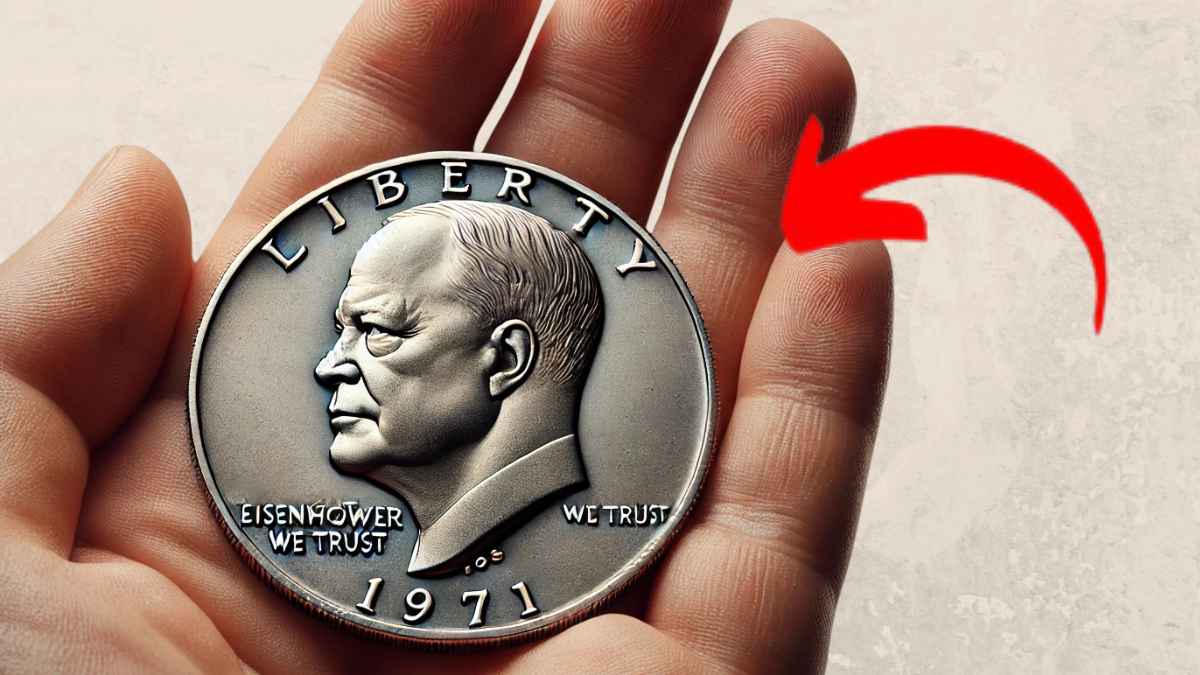There are coins that can reach a value much higher than their face value. A clear example of this is the 1 US dollar coin, which in the collector’s auction market is worth up to 12,500 dollars. As you can see, this is an impressive sum. But how do you identify if you have one of these rare coins? Now we tell you everything you need to know about this priceless specimen.
Characteristics of the Eisenhower dollar
The coin we are talking about is none other than the Eisenhower Dollar, minted between 1971 and 1978, by the United States Mint . On the obverse of this issue, we can find the portrait of Dwight D. Eisenhower, the 34th President of the United States, along with the words “LIBERTY, IN GOD WE TRUST” and the year 1971.
It also includes a mint mark, which indicates at which mint it was manufactured. The most common marks are the “D” for Denver and the “S” for San Francisco. However, it is the absence of this mark that may make this coin very valuable.
On the reverse, this specimen shows an eagle landing on the Moon, with the Earth in the background, and the legends “UNITED STATES OF AMERICA, ‘E PLURIBUS UNUM’ AND ‘ONE DOLLAR’. However, what really makes it special and rare is that some of these coins were minted without the mint mark. This means that they were minted at the Philadelphia mint and that there were very few units. Also, because they are so scarce, they are considered manufacturing errors, which increases their value exponentially.
According to the Professional Coin Grading Service (PCGS), a $1 coin without mint mark, in excellent condition, can reach the value of $14,500. This high price is due to the fact that its errors make it unique, which is why all collectors want to own it. Thus, its value in the numismatic market increases.
From failure to fame: the story of this particular coin
In numismatics, sometimes failures become real treasures. This is the case of the Eisenhower dollar, which had a short life in the pockets of Americans, but today its value is 13,500 dollars. Despite its massive production, this piece never managed to conquer the hearts of citizens, nor did it become the favorite of traders.
Its size, considerably larger than that of other coins, turned out to be its Achilles’ heel. It was quite uncomfortable to handle on a daily basis, which led to the decision to withdraw them from the market only seven years after their launch in 1978.
What to do if you have one of these coins?
If you think you have a coin that is very valuable to collectors, the first thing you should do is check to see if this unit has the mint mark. If it does not, it is a good indication that it may have been produced in Philadelphia and, therefore, have a much higher value. In addition, it is critical that the specimen is in good condition. If the blank has no wear marks, its value is even greater.
If any of the coins you have has these characteristics, do not hesitate to take it to a pawnshop. There you will find numismatic specialists who will be able to answer all your questions. You can also look for information in specialized groups on social networks, or on sites such as eBay. And although not all rare coins fetch high prices, some may surprise you and give you a good return if you decide to sell them.







